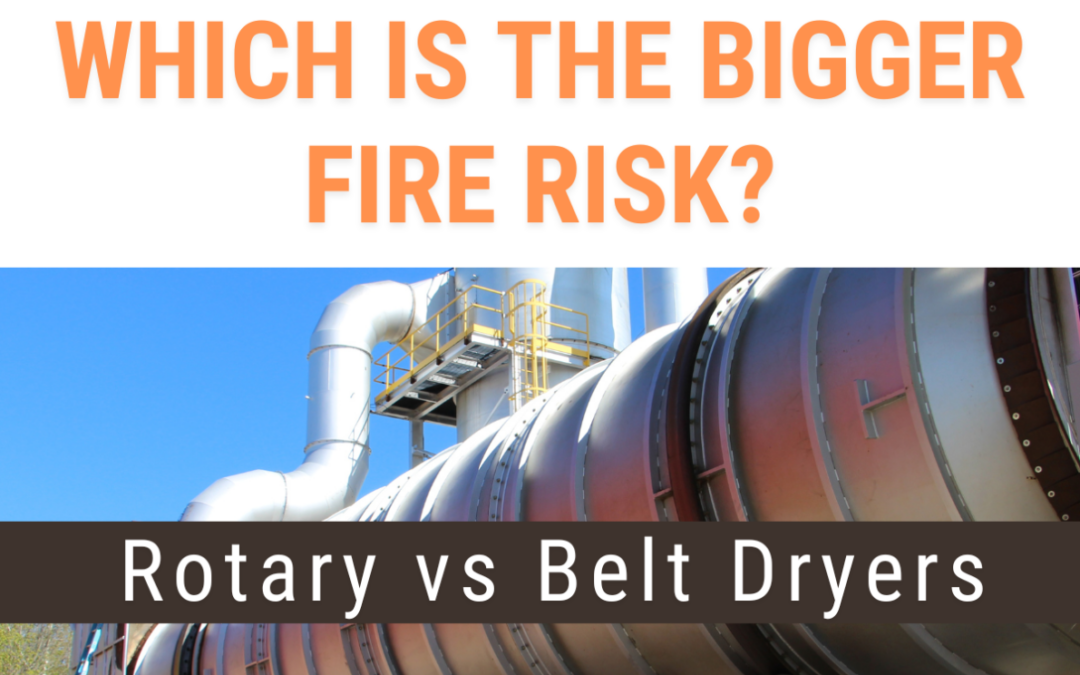Rotary Drum Dryers vs. Belt Dryers:
With industrial drying, there are two major styles of machinery—rotary drum dryers, like the ones PDI designs and manufactures, and belt dryers. Essential for keeping wood processing plants running smoothly downstream, both styles of dryer will get the job done, but their risks and consequences can vary dramatically when things go wrong.
Belt dryers have a nasty reputation: High fire risk. The design of these dryers creates a perfect opportunity for danger—when dust accumulates, it can ignite, and once that fire starts, it can spread quickly. Why is this so concerning? Because the damage doesn’t stop at the fire itself. Conveyors and steam coils, critical parts of the system, can be destroyed, taking the entire mill down for months. It’s an expensive nightmare!
Rotary drum dryers, the style PDI designs, are not immune to fire. They are, however, a bit more forgiving in terms of catastrophic consequences. Rotary drum dryer fires tend to be less destructive thanks to a more robust design. Repairs are simpler, downtime is shorter, and the whole process just costs less. The recovery time is quicker, so even if you do face a fire, the financial and operational damage is significantly less severe.
The difference between the two isn’t just theoretical—it’s a matter of the bottom line. The choice between belt and rotary drum dryers could mean the difference between inconvenience and prolonged crippling downtime. It’s not just about choosing the right dryer for your facility’s needs; it’s about weighing the risks and ensuring that your operation is prepared for the worst-case scenario.
Contact us today to learn how a PDI rotary drum dryer can solve your mill’s drying problems, while also mitigating your fire risk.
